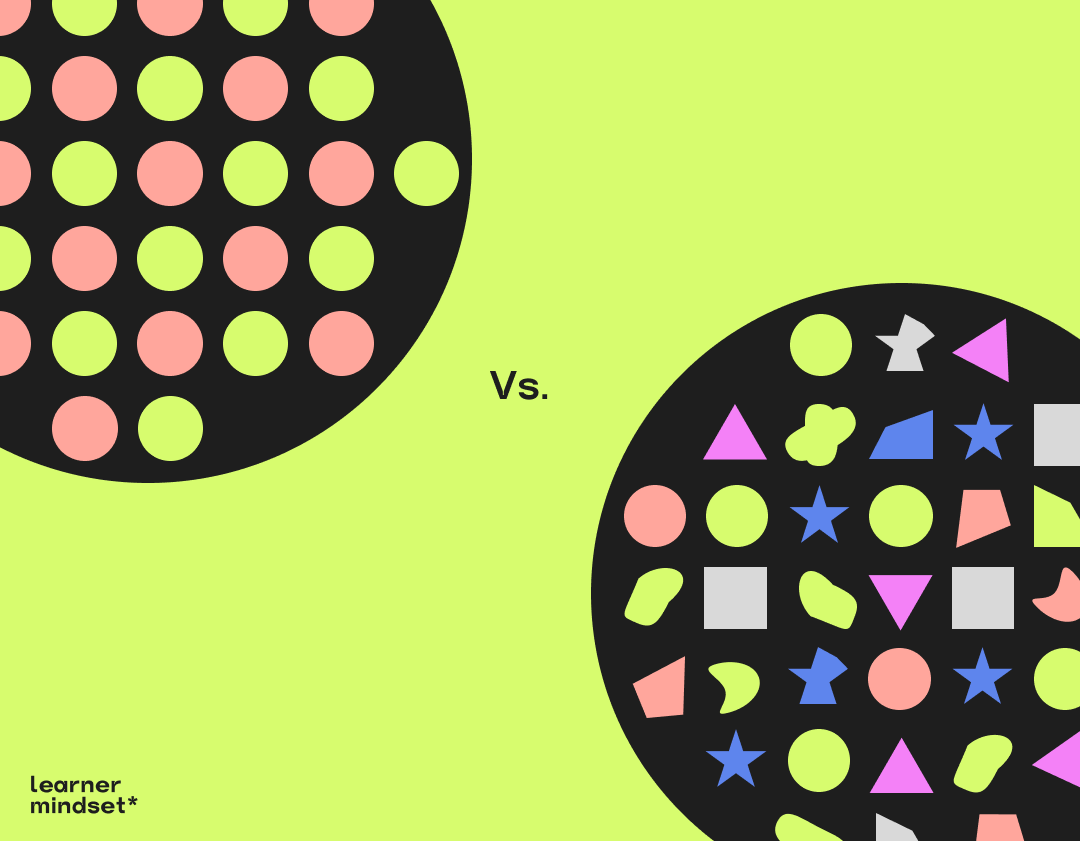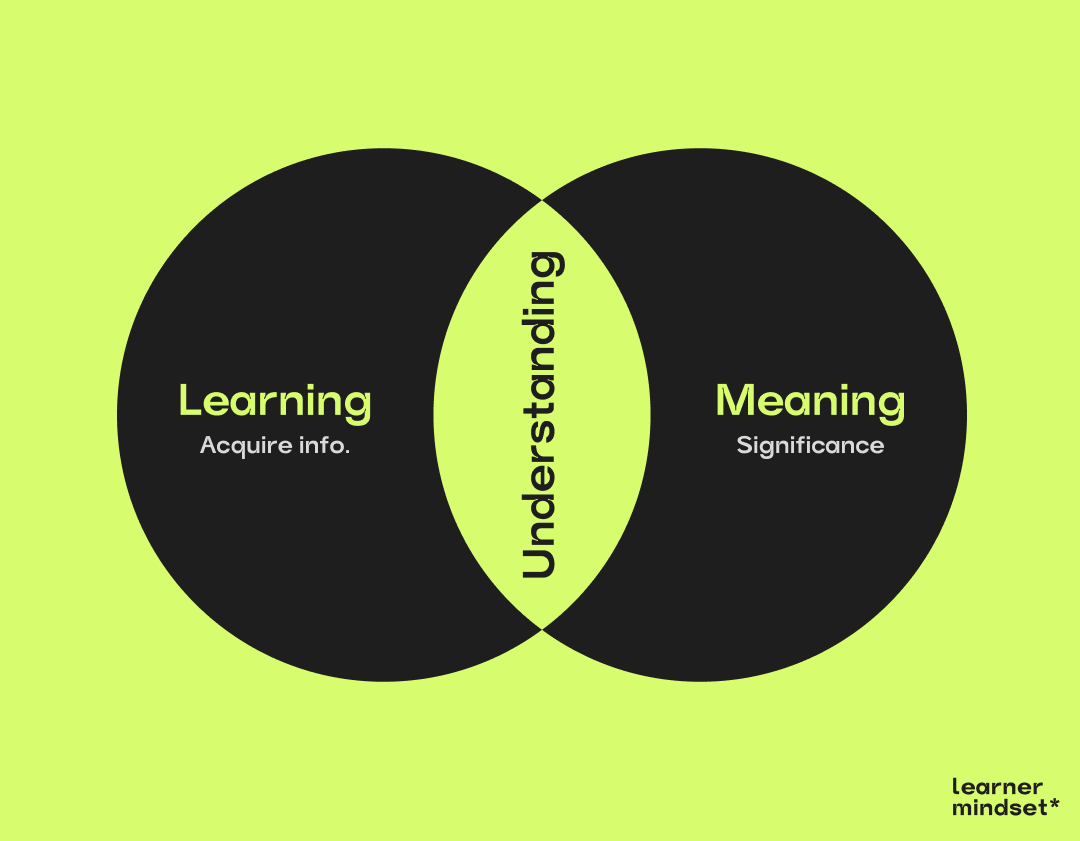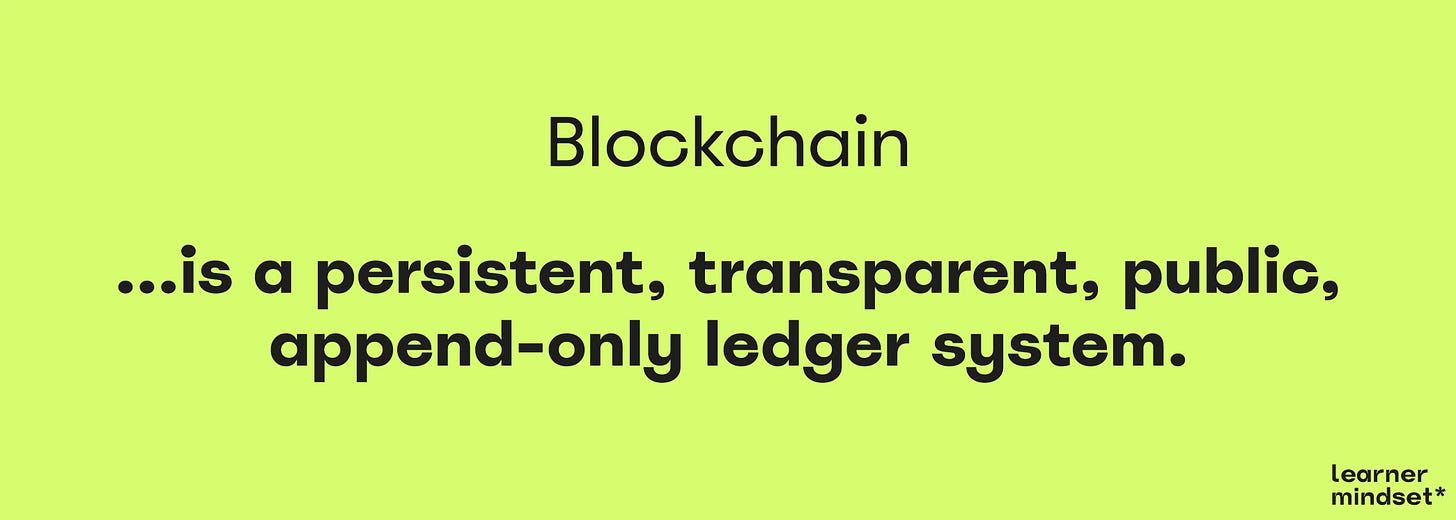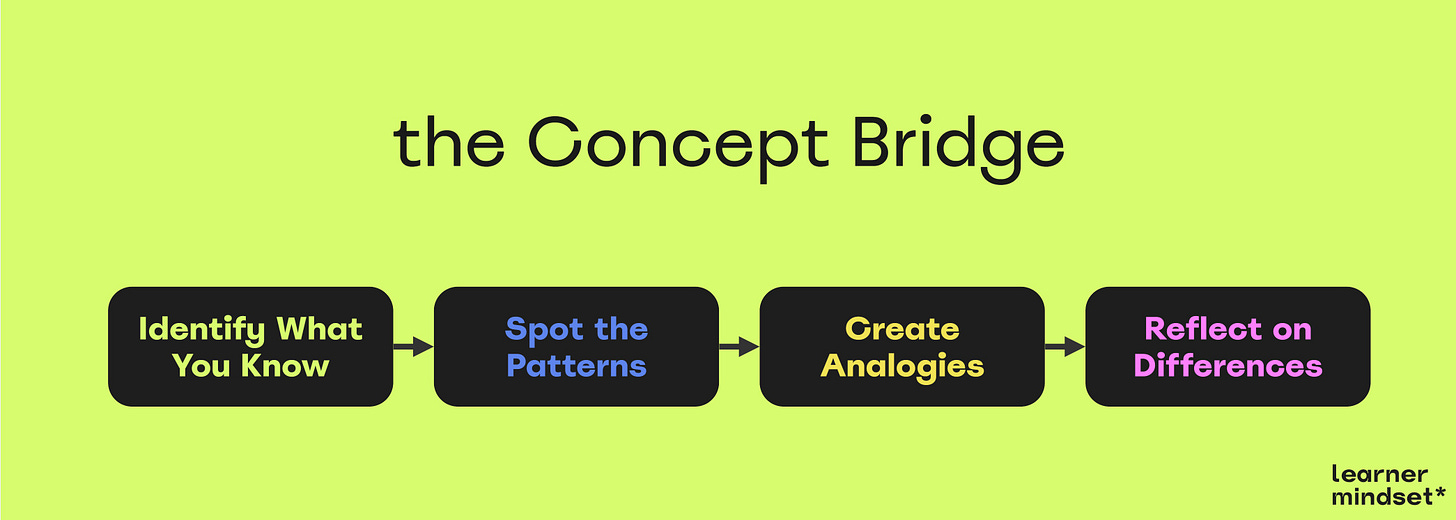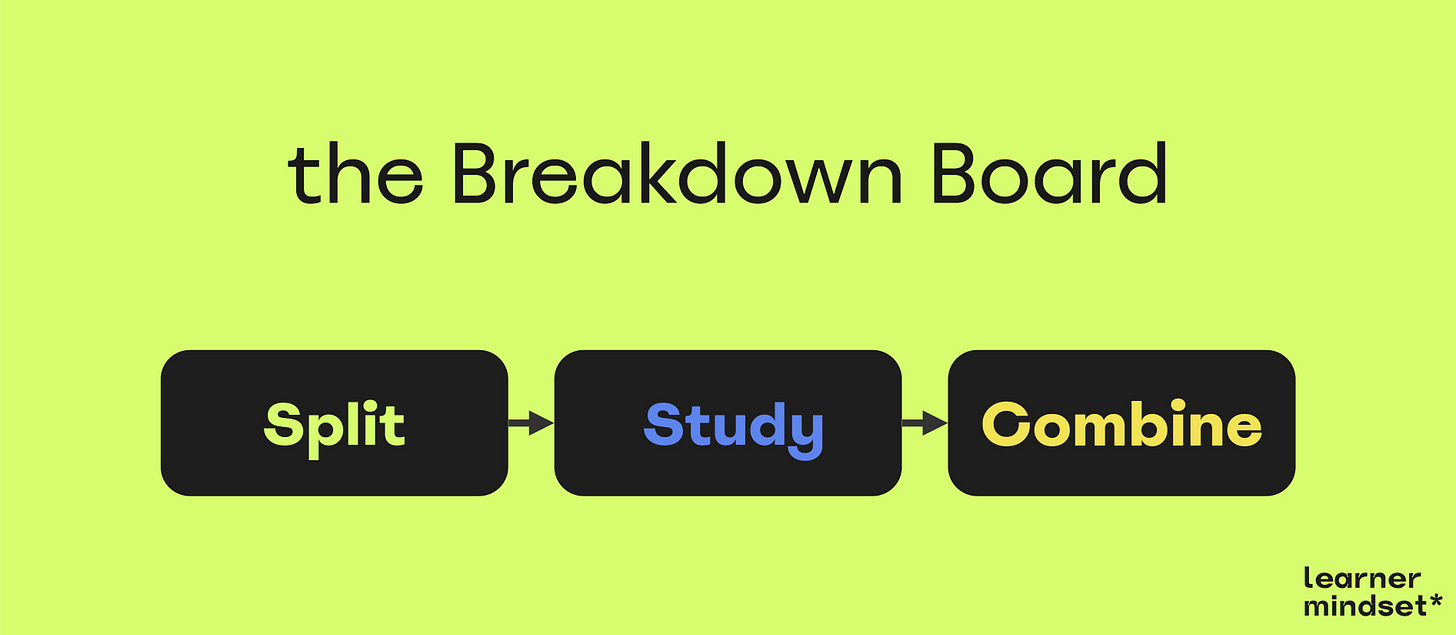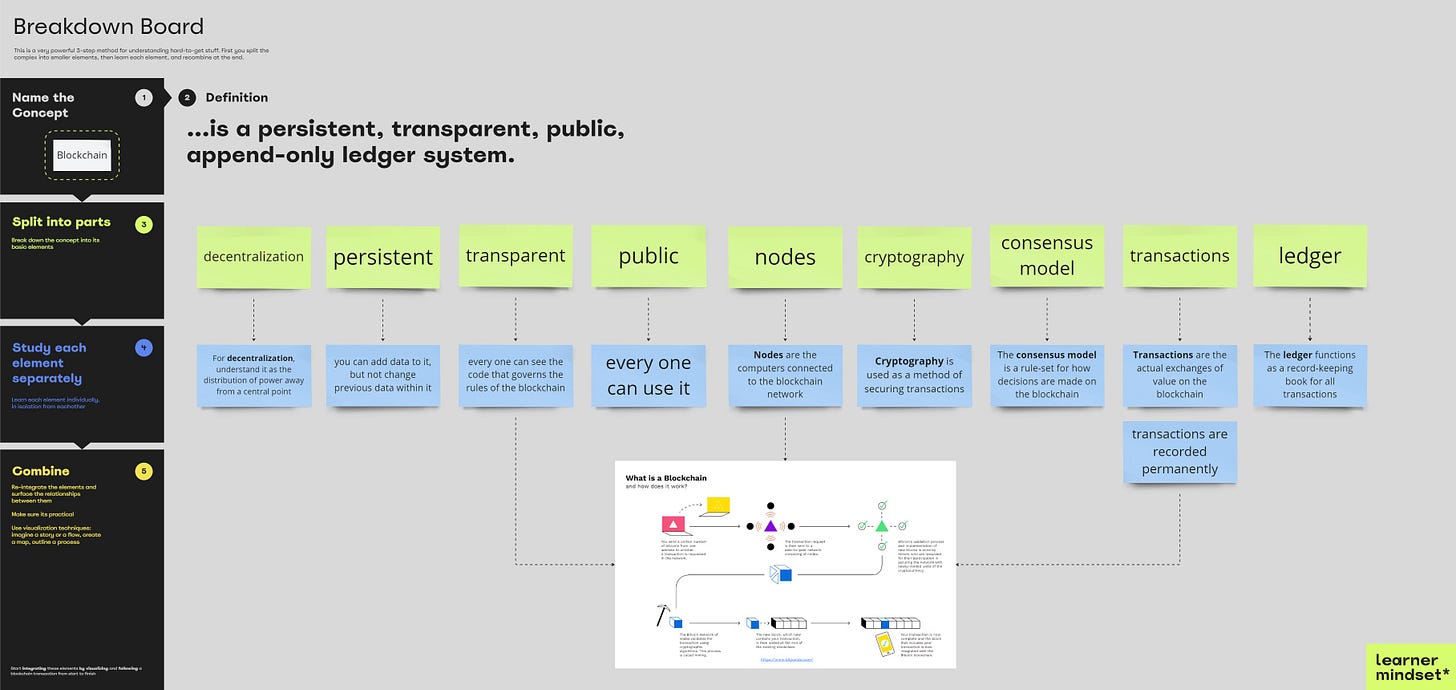3 Effective Strategies For Understanding Difficult Concepts
Use the simple “Write it Down”, clever “Concept Bridge”, or the analytical “Breakdown Board” methods to tame the surrounding complexity.
👋 Hello frens!
This is the second part of a two-part series about understanding difficult concepts. In the previous article, I have discussed in detail why some concepts are hard to understand. You can read about it here.
In this article, I want to teach you how to effectively & efficiently tackle complex concepts.
One of the oldest ideas in cognitive science claims that:
The organism will seek to understand their environment by reducing incoming information to a simpler, more coherent, and more useful form.
This inspired me to compose a set of simple and intuitive methods for understanding that draw from the cognitive science. Let’s jump in!
A basket of fruits
As you recall from the first article, some things are harder to learn and understand than others. That is the nature of our reality. To understand why that is – let’s quickly revisit the term: ‘concept complexity’.
Concepts and tasks can get hard to understand because they are internally complex. Imagine you're sorting through a basket of fruits; it's pretty straightforward because you're only looking at a few types, like 🍏 apples and 🍊 oranges. This is similar to learning simple ideas – they're easy to grasp because they don't change much and they're pretty concrete, not too abstract.
Now picture trying to sort through a whole market's worth of different fruits, including exotic ones you've never seen before. That's trickier, right?
That's because as ideas get more complicated, they have more parts you need to think about, they can change in more ways, and they require you to think in abstract ways beyond what’s right in front of you.
It's like learning not just about different fruits but also about where they come from, how they taste, and how they can be used in recipes you’ve never tried before.
Alright, having refreshed what makes stuff harder to understand, let's introduce the last piece to the puzzle – the idea of ‘concept difficulty’ and the fact that it’s always on a spectrum.
Concept difficulty
All the various concepts and tasks we are faced with in our daily work will differ from each other. I like to imagine that these differences exist on a spectrum.
The spectrum spans from concepts / tasks that are Easy, Moderate, Hard, and Extremely Hard to grasp. I’m introducing you to this spectrum because it's a good rule of thumb to assess the concept difficulty before trying to understand the given concept. By assessing the difficulty, you get a better picture (think ‘ballpark’) of the nature of the concept. And as a result – you know with what kind of animal you are dealing with and what technique to apply to understand it better.
It’s also worth mentioning that one of the quickest ways of ‘getting things’ is via understanding through examples. It helps learners to concretize abstract concepts by relating them to tangible scenarios. However, learning through examples has its limitations. Reliance on examples may fall flat when learners encounter complex problems that do not directly map onto provided examples, requiring a level of abstract thinking and problem-solving that goes beyond what the examples can offer. In such cases, you need to be equipped with the skills to abstract the relevant principles and apply them to novel situations. Conveniently – the strategies I recommend to you will work well in such ambiguous situations.
Before we progress further, an important note on the semantics: Learning and understanding are related but not identical. Learning can be seen as the process of acquiring information or skills through study or experience. Understanding is a deeper cognitive process that involves comprehending the meaning, significance, or cause of something.
With that out of the way, let’s look closer into different levels of concept difficulty on a spectrum with business-related examples.
🐤 Easy to understand
Product Line Extensions
Imagine you are tasked with creating an extension to the existing product line for some company. The nature of your task and any eventual learning you would have to do lands on the “Easy” spectrum.
After all, you are comprehending products that are slight variations on an existing product (e.g., a new flavor of a popular snack). The core concept remains the same, making it easier to comprehend through examples.
This is at the simpler end of the continuum because the core concept (the snack) is already understood, and the new information is a slight variation on that existing knowledge. The cognitive load is minimal, as these extensions usually follow a familiar pattern, requiring very little cognitive restructuring or new learning.
🎓 Learning: Here, “learning” is about memorizing the new variations — the flavors or features of a product.
🤷♂️ Understanding: “Understanding” is not as much in focus because the new knowledge closely mirrors something already known.
🧒 Moderate Difficulty
Market Segmentation
While segments are defined through clear parameters (demographics, behavior, etc.), the variation within each can be significant, making the category harder to grasp from examples alone.
The difficulty increases slightly here due to the introduction of more variability and dimensions to consider (such as demographics, behavior, psychographics). These multiple factors result in increased complexity because the learner must integrate more abstract relationships – not just recognize simple patterns as in product extensions.
🎓 Learning: involves understanding definitions and criteria for different market segments.
🤷♂️ Understanding: becomes more challenging as one must comprehend the subtleties and applications of these segments, which are not immediately clear from the examples.
🕵️♀️ Hard to Understand
Strategic Business Shifts
A company transitioning from B2B to B2C, which involves not only a change in target customers but also deep alterations in operations, marketing, and support – complex to understand and learn just from examples.
Learning strategic shifts such as a pivot from B2B to B2C involves understanding complex changes across multiple dimensions of a business, including target audiences, product/service delivery, and customer support. The challenge arises from the need to comprehend the multi-faceted nature of the changes and their interrelated effects on the business.
🎓 Learning: requires absorbing various new pieces of information about operations, marketing, etc.
🤷♂️ Understanding: is deeper (and harder) as it includes grasping the interplay between various areas and envisioning the overarching strategy behind the transition from B2B to B2C.
🦸♂️ Extremely Hard to Understand
Company Culture
Culture refers to the values, behaviors, practices, and social norms of a company. It's abstract, often unwritten, and can vary widely, even within departments of the same company, making it very difficult to generalize from examples.
As you can see, the complexity significantly intensifies with company culture as a concept. Company culture is an abstract concept with no clear-cut definition or observable boundaries, influenced by implicit social norms, values, and behaviors. The intrinsic difficulty arises from its highly contextual nature, requiring you to integrate a multitude of subtle cues and unwritten rules that may differ widely even within the same organization.
Yep, culture is extremly hard to grasp and understand well 😵.
Let’s have another example.
Innovation and Disruption Models
It’s extremely hard to fully understand (in the right context) the business models that transformed industries. Think Airbnb in hospitality, Netflix in entertainment or Tesla in automotive. Each instance is highly unique example, with myriad factors contributing to the nature of the concept and its success, making the understanding process effing complex.
At the top of the complexity scale, learning innovation and disruption models is extremely challenging due to the lack of a single formula for success, and the impact of a wide range of factors. Understanding these models necessitates a deep comprehension of not just the business itself, but also the broader market dynamics and technological underpinnings.
🎓 Learning: might involve studying multiple examples or theories, etc.
🤷♂️ Understanding: is quite challenging due to the abstract, variable nature of company culture and the unique, complex stories of innovation and disruption in various companies.
Hence, in all the above scenarios, knowledge acquisition (learning) is a precursor, but grasping its deeper meaning and implications (understanding) is necessary for mastery, especially as the complexity of the concept increases.
To sum up, understanding concepts can range from easy to really tough, and it often depends on a couple of characteristics of the thing you want to understand. Simple ideas don't change much, and you don't need to imagine them in a bunch of different ways. But when ideas get more complicated – and you've got loads more to think about, plus things keep changing, and you have to use your imagination more – that's when your brain has to work harder 🧠.
Not discouraged by the state of affairs – let’s see how can we tackle these difficult concepts.
There are many strategies. Every strategy has slightly different principles at work, but they all converge at making it easier for you to grasp the difficult subject. They encourage you to simplify, identify relationships, or modify the learning order to get unstuck. With the use of the strategies, and some tweaks here and there – you can tackle the Moderate and Hard concepts too!
Strategies for understanding
We will use the ADEPT method as the core approach to understanding complex concepts.
ADEPT is an abbreviation for:
Analogy
Diagram
Example
Plain-English Description
Technical Description
Analogy: Compare the new concept with something familiar
Diagram: Visualize the information (implement diagrams, charts, and mind maps)
Example: Look at practical applications of the concept
Plain-English Description: Describe the concept in your own words
Technical Description: Learn the formal definitions and terms
I’ve created a couple of handy canvases that will help you apply the ADEPT method practically and systematically. The ADEPT method underlines very potent strategies like “Write it Down”, “Concept Bridge”, and “Breakdown Board”. Let’s see in detail how can you use these in your quest for understanding.
We start with the strategy that is the fastest to execute – “Write it Down”.
Write it Down
The "Write It Down" strategy is a methodical approach to dealing with complex information by putting thoughts, facts, and plans on paper or digital format. In plain words: “just write this sh*t down”. Writing things down can have instant benefits in terms of clarity and retention.
This strategy is strong because it can be used ad hoc, or continuously during the entire project engagement or your exploration. By repeatedly externalizing your thoughts through writing – you’re not only enhancing your grasp on the concept, but also creating a valuable resource that will guide your consulting work from ideation to execution.
Say you are a consultant working with a client that is in the process of incorporating blockchain technology into their business model. You know nothing about blockchain, nada, zero. Here’s where to start:
Articulate the Difficult Concept
Begin by writing down an explanation of the complex concept in your own words as if you were teaching it to someone else. This forces you to break the concept into its core components, which can lead to a clearer understanding.
List Questions and Knowledge Gaps
As you delve into the difficult concept, write down any questions that arise or areas where your understanding is lacking. This creates a checklist of points to research further or seek clarification on.
For instance, if you're tasked with helping a client incorporate blockchain technology into their business model, you might begin by writing down a simple explanation of blockchain. Then, as you map out how this could be achieved, you'd document your research on its applications in the industry and list questions for further exploration. You get the idea. Incredibly simple, yet powerful strategy.
Concept Bridge
The “Concept Bridge” strategy is about connecting new, complex ideas to the things you already understand. This strategy makes learning easier by tying unfamiliar information to familiar concepts – creating 'bridges' in your memory that help you remember and make sense of the new stuff. It has four key stages where you Identify, Spot Patterns, Create Analogies and Reflect on Differences.
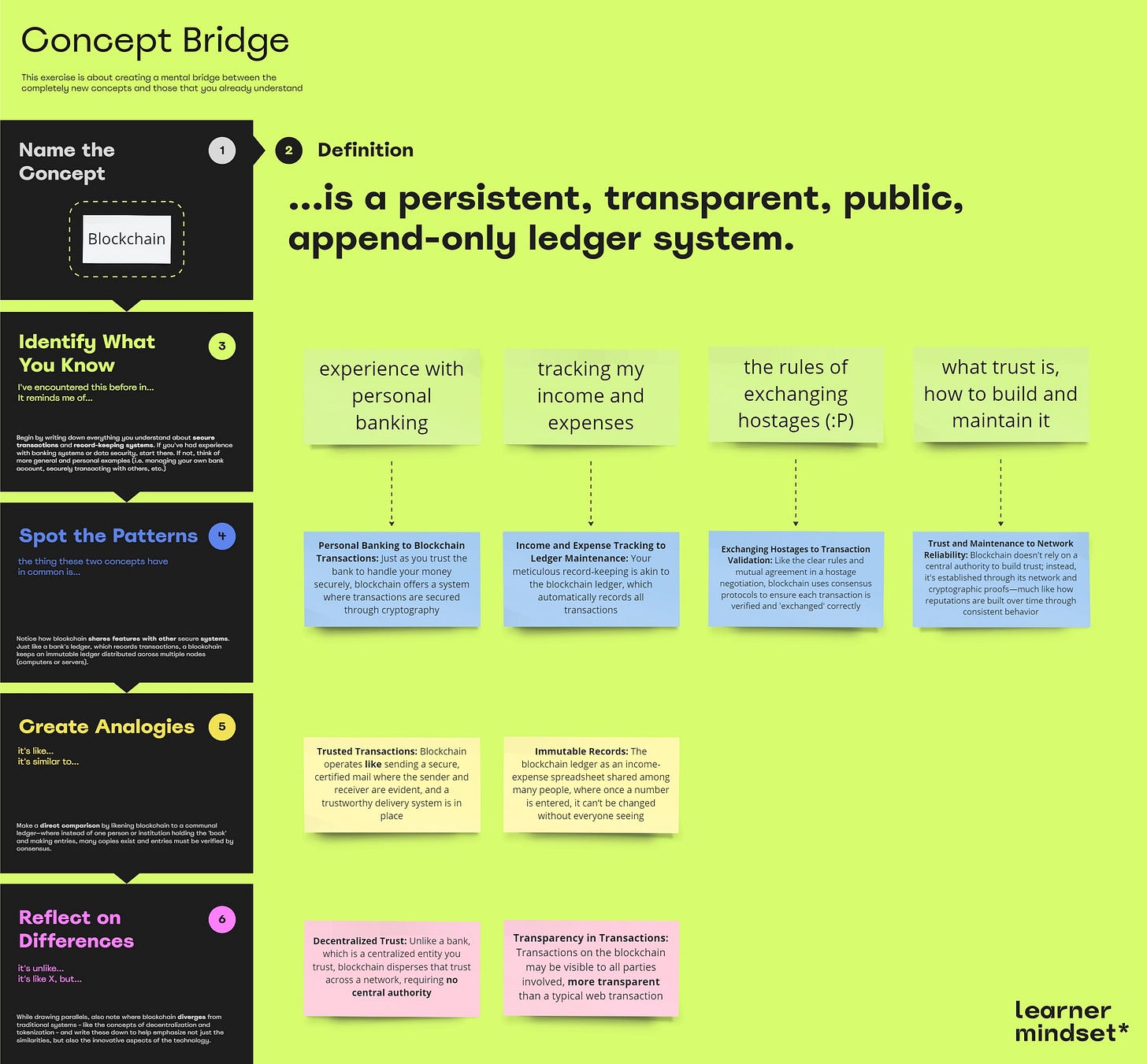
Here's how you might apply this strategy. Let’s use the blockchain concept example →
Identify What You Know
Begin by writing down everything you understand about secure transactions and record-keeping systems. If you've had experience with banking systems or data security, start there. If not, think of more general and personal examples (i.e. managing your own bank account, securely transacting with others, etc.)
Spot the Patterns
Look for patterns or similarities between what you already know and the new concept. Notice how blockchain shares features with other secure systems. Just like a bank's ledger, which records transactions, a blockchain keeps an immutable ledger distributed across multiple nodes (computers or servers).
Create Analogies
Make a direct comparison by likening blockchain to a communal ledger – where instead of one person or institution holding the 'book' and making entries, many copies exist and entries must be verified by consensus.
Reflect on Differences
While drawing parallels, also note where blockchain diverges from traditional systems – like the concepts of decentralization and tokenization – and write these down to help emphasize not just the similarities, but also the innovative aspects of the technology.
By associating and juxtaposing these familiar experiences with blockchain components, you incrementally build a comprehensive framework to understand the blockchain concept. Cool, right?!
Breakdown Board
This is a very powerful 3-step method for understanding the hard-to-get stuff. In a nutshell, you split the complex into smaller elements, then you focus and learn each element separately, and finish off with re-combining the elements.
Here’s the step-by-step process:
Split
Begin by identifying and writing down the different components that make up the complex concept or system. For instance, break down the blockchain concept into its fundamental parts. You might list the following components: Decentralization, Ledger, Nodes, Consensus Model, Transactions.
Study
Focus on one component at a time, learning each part thoroughly. This could involve studying ‘decentralization’ to see how it enhances security and eliminates single points of failure in a network. Then you could learn about ‘ledger’ technology to understand how blockchain maintains a transparent and immutable transaction record. You could also look into ‘transactions’ to understand how value is transferred over the blockchain and how blockchain can trace asset history.
Combine
After learning each part, write down how these parts interact and connect with one another. An integrated understanding will emerge as you synthesize the various components, providing you with a comprehensive view of the entire blockchain concept. Here, you could for example create diagrams or write paragraphs that describe the journey of a blockchain transaction, from initiation to being recorded on the ledger. It's important for this step to be as practical as possible, you need to experience the interplay between various parts through starting a mini-project or building a prototype, or simply through using parts of the concept you are trying to understand. In the blockchain example – it would involve you making some actual Bitcoin transactions, inspecting and interpreting the blocks, or even setting up your own node. It all depends on how deep you need to go with your understanding.
I highly encourage you to try out these techniques yourself.
That’s a wrap for this article.
Hope you enjoyed it and learned something usefull.
Would love to hear your feedback on how they work for your individual learning cases!



